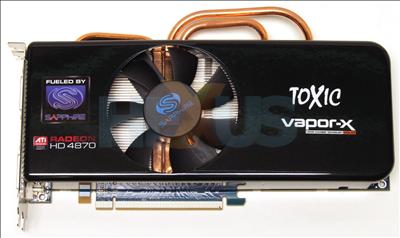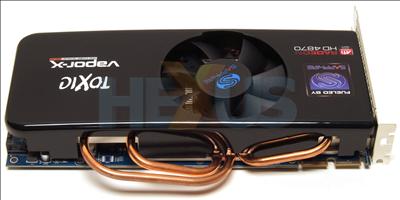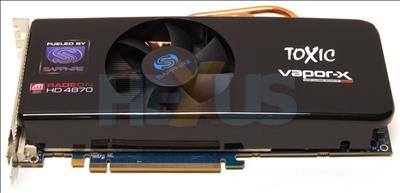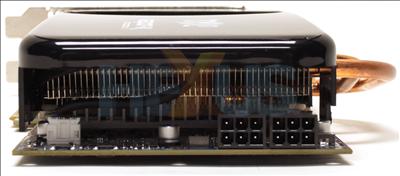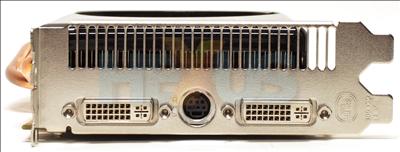Card details
Please head on over to our look at the Radeon HD 4850 and HD 4870 architecture look to see how AMD brought the performance fight back to NVIDIA in the mid-range space.Sapphire currently sells the Radeon HD 4870 in two flavours, differentiated with respect to framebuffer sizes: 512MB and 1GB. Both models ships with core/shader clocks of 750MHz and the GDDR5 memory running at an effective 3.6GHz.
Looking online, the 512MB-equipped version etails for around £175 whilst the 1GB will set you back around £200 - which is average pricing for AMD's various AIBs.
The Radeon HD 4870s remain AMD's fastest single-GPU graphics cards and thus only premium yields make the grade. Others, we suppose, are destined to become productised to Radeon HD 4850, which ships with a slower core/shader clock of 625MHz.
So any company looking to push HD 4870 speeds higher needs to invest in better-than-reference cooling, and it's not bad to begin with.
Sapphire's answer is to strap an also-dual-slot-taking cooler on top and then to augment it with Vapor-X technology.
The mean-looking cooler uses Sapphire's Vapor Chamber Technology (VCT) that debuted with the HD 3870 Atomic card which we looked at earlier this year.
But the Radeon HD 4870 is a hotter-running beast so Sapphire adds in three heatpipes to help move the heat away from the GPU as quickly as possible.
Here they are, poking out of one side.
The combination of VCT and heatpipes should provide lower running temperatures and, consequently, a little more headroom in the RV770 GPU.
Sapphire inches up the core/shader combination to 780MHz (from 750MHz) - a marginal increase, really - but increases GDDR5 memory speed to an effective 4,000MHz - up from an already-blistering 3,600MHz.
There's still 'only' 512MB, as per the reference design, and that should be enough to game at, say, 1,920x1,200 with decent image-quality applied.
An upshot of an upgraded cooler also extends to the noise, or lack thereof. We could barely hear the central fan in 2D mode and its pitch rose just a touch when under prolonged 3D hurt: certainly better than the reference design.
Funds permitting, another three cards can be coupled together to form four-way CrossFireX, but most, if using multi-GPU technology, will opt for just another card.
Two six-pin PCIe connectors are common to all Radeon HD 4870s.
Both DVI ports push out dual-link signals and audio can be transferred over with an HDMI dongle, which is bundled in with the retail package.






